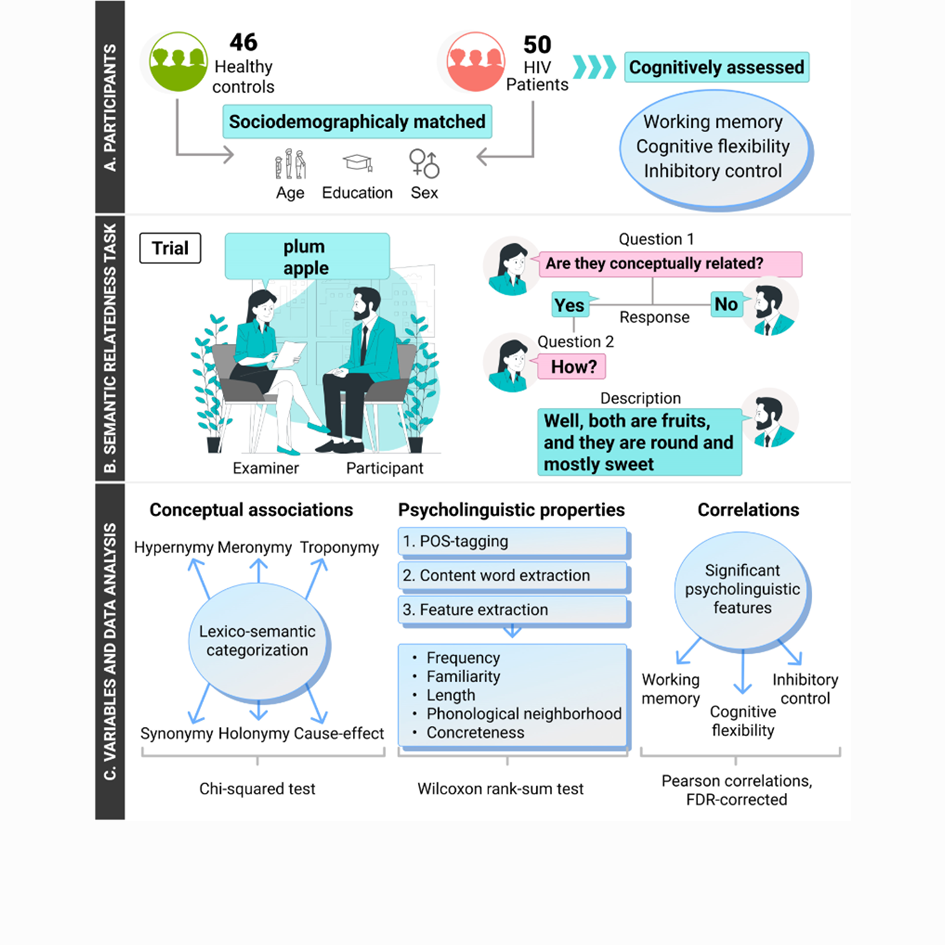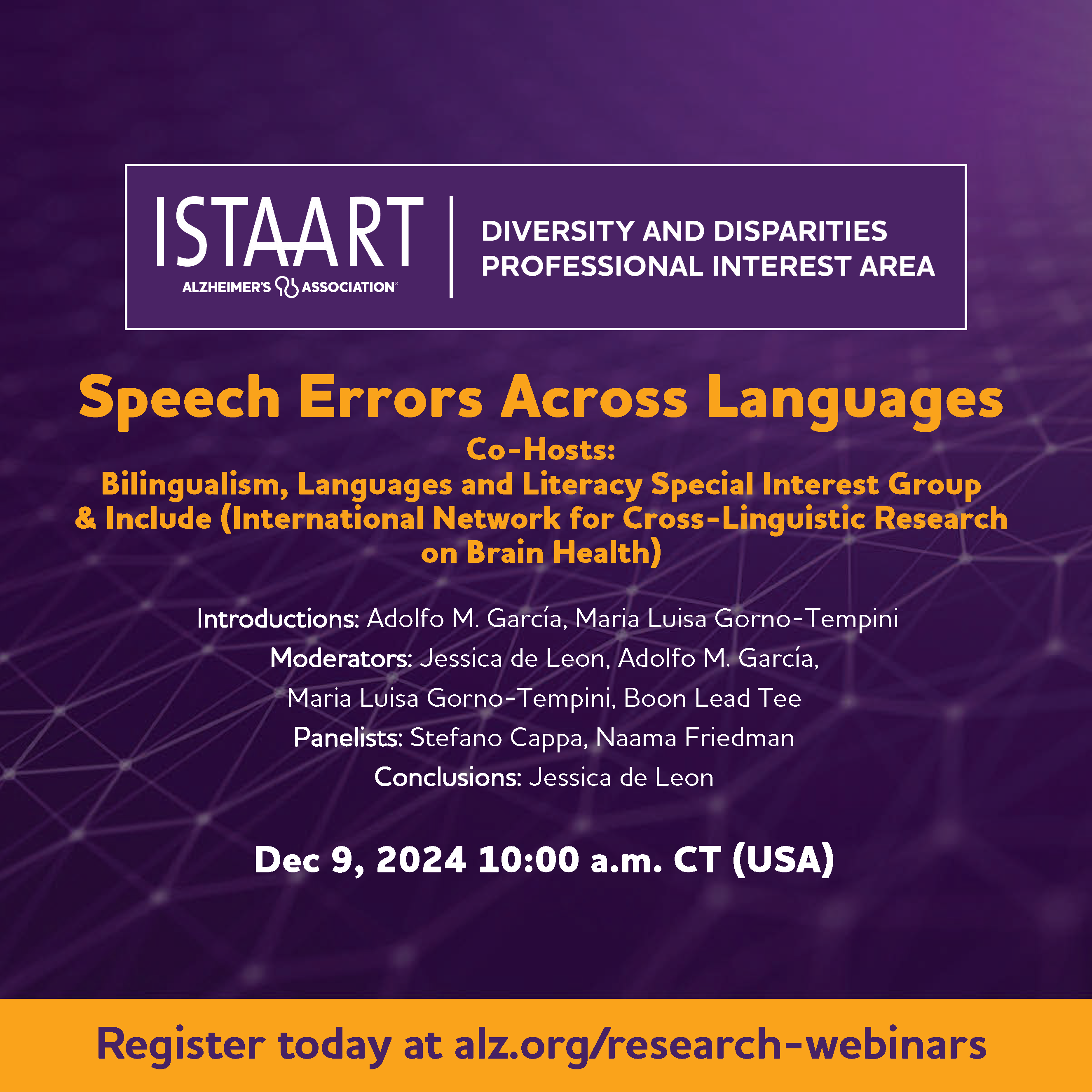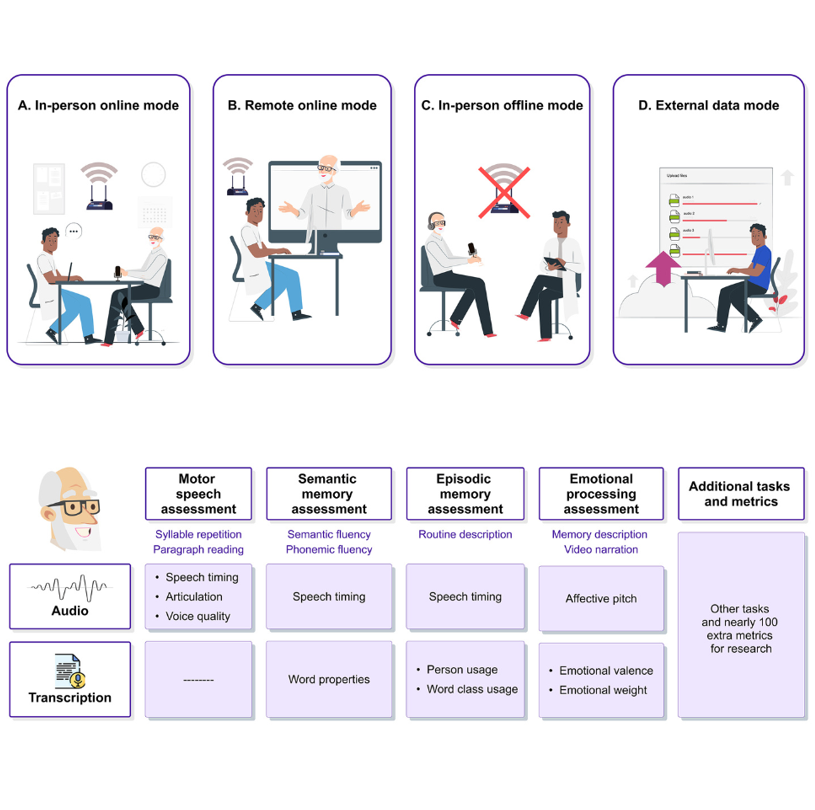Semantic memory navigation in HIV: Conceptual associations and word selection patterns
Gattei, C. A., Ferrante, F., Smapedro, B., Sterpin, L., Abusamra, V., Abusamra, L., Cañataro, P. A. & García, A. M. (2024). Semantic memory navigation in HIV: Conceptual associations and word selection patterns. The Clinical Neuropsychologist 39(6), 1598-1614.
Objetivo: Este estudio de prueba de concepto pretendía caracterizar los perfiles de memoria semántica en individuos con virus de inmunodeficiencia humana (VIH) y deterioro neurocognitivo leve. Método: Utilizando una tarea de relación semántica, exploramos la asociación conceptual y los patrones de selección de palabras en personas que viven con el VIH ( n= 50) en relación con personas que viven sin el VIH (n= 46). También se estudió si los patrones de selección de palabras en el grupo de PVVIH estaban asociados con la capacidad de la memoria de trabajo, la flexibilidad cognitiva y el control inhibitorio. Resultados: Aunque la precisión no difirió entre los grupos, las PVVS produjeron respuestas significativamente más largas que los controles (r = 0,32), con menos hiperónimos (d = 0,47), más troponímicos (r = 0,37) y palabras más frecuentes (r = 0,39) y con más vecinos fonológicos (r = 0,22). Estos patrones sobrevivieron a la covariación con el estado cognitivo de los participantes. Ninguno de estos patrones se correlacionó con medidas de memoria de trabajo, flexibilidad cognitiva, control inhibitorio o carga viral (todos los coeficientes de correlación < 0,36). Conclusiones: En conjunto, estos resultados sugieren que las PLWH podrían utilizar estrategias alternativas de búsqueda de palabras durante la navegación por la memoria semántica, independientemente de la gravedad de otros síntomas cognitivos. Estos hallazgos contribuyen a la caracterización de los déficits cognitivos en el VIH y a la búsqueda de nuevos marcadores de la enfermedad.
Para acceder al artículo, hacé click aquí.
Semantic memory navigation in HIV: Conceptual associations and word selection patterns
Gattei, C. A., Ferrante, F., Smapedro, B., Sterpin, L., Abusamra, V., Abusamra, L., Cañataro, P. A. & García, A. M. (2024). Semantic memory navigation in HIV: Conceptual associations and word selection patterns. The Clinical Neuropsychologist 39(6), 1598-1614.
Objective: This proof-of-concept study aimed to characterize semantic memory profiles in individuals with human immunodeficiency virus (HIV) and mild neurocognitive impairment. Method: Using a semantic relatedness task, we explored conceptual association and word selection patterns in people living with HIV (PLWH; n = 50) relative to people living without HIV (n = 46). We also studied whether word selection patterns in the PLWH group were associated with working memory capacity, cognitive flexibility and inhibitory control. Results: While accuracy did not differ between groups, PLWH produced significantly longer responses than controls (r = .32), with fewer hypernyms (d = .47), more troponyms (r = .37), and words that were more frequent (r = .39) and had more phonological neighbors (r = .22). These patterns survived covariation with participants’ cognitive status. None of these patterns correlated with measures of working memory, cognitive flexibility, inhibitory control or viral load (all correlation coefficients < .36). Conclusions: Together, these results suggest that PLWH might use alternative word finding strategies during semantic memory navigation, irrespective of the severity of other cognitive symptoms. Such findings contribute to the characterization of cognitive deficits in HIV and to the search for novel markers of the condition.
To access the full paper, please click here.



